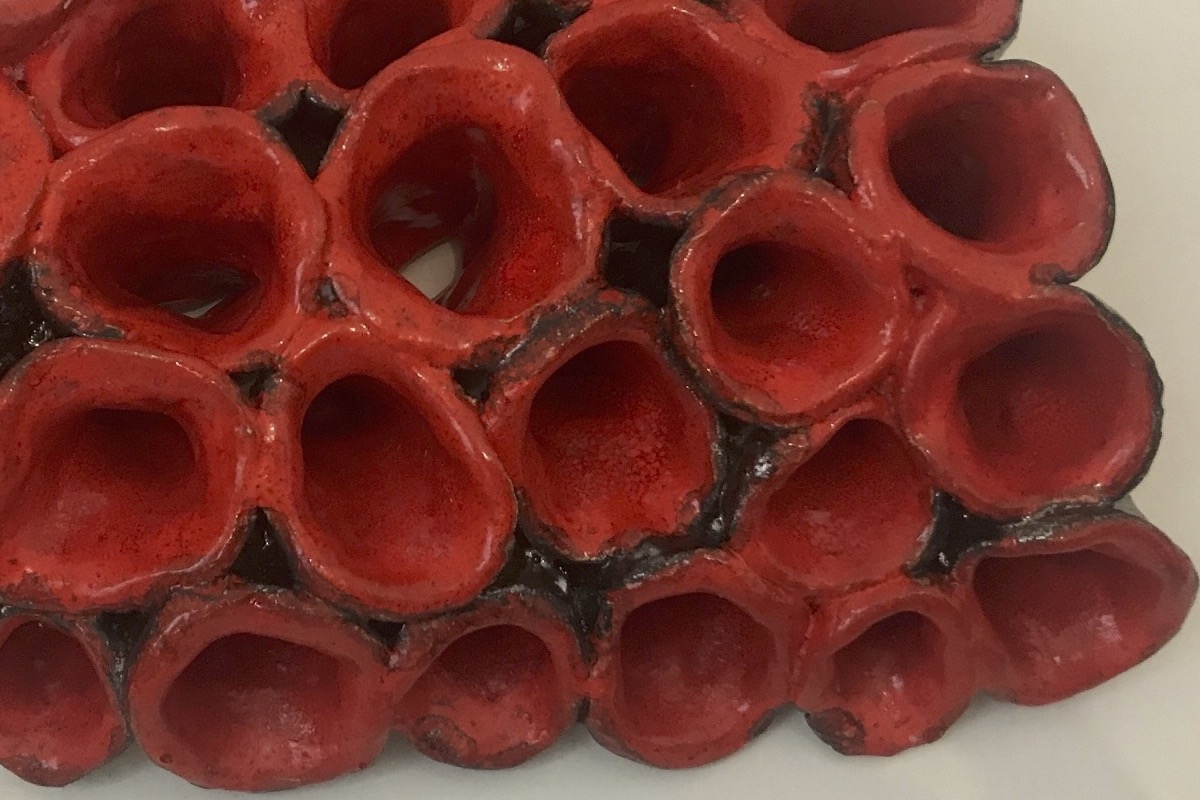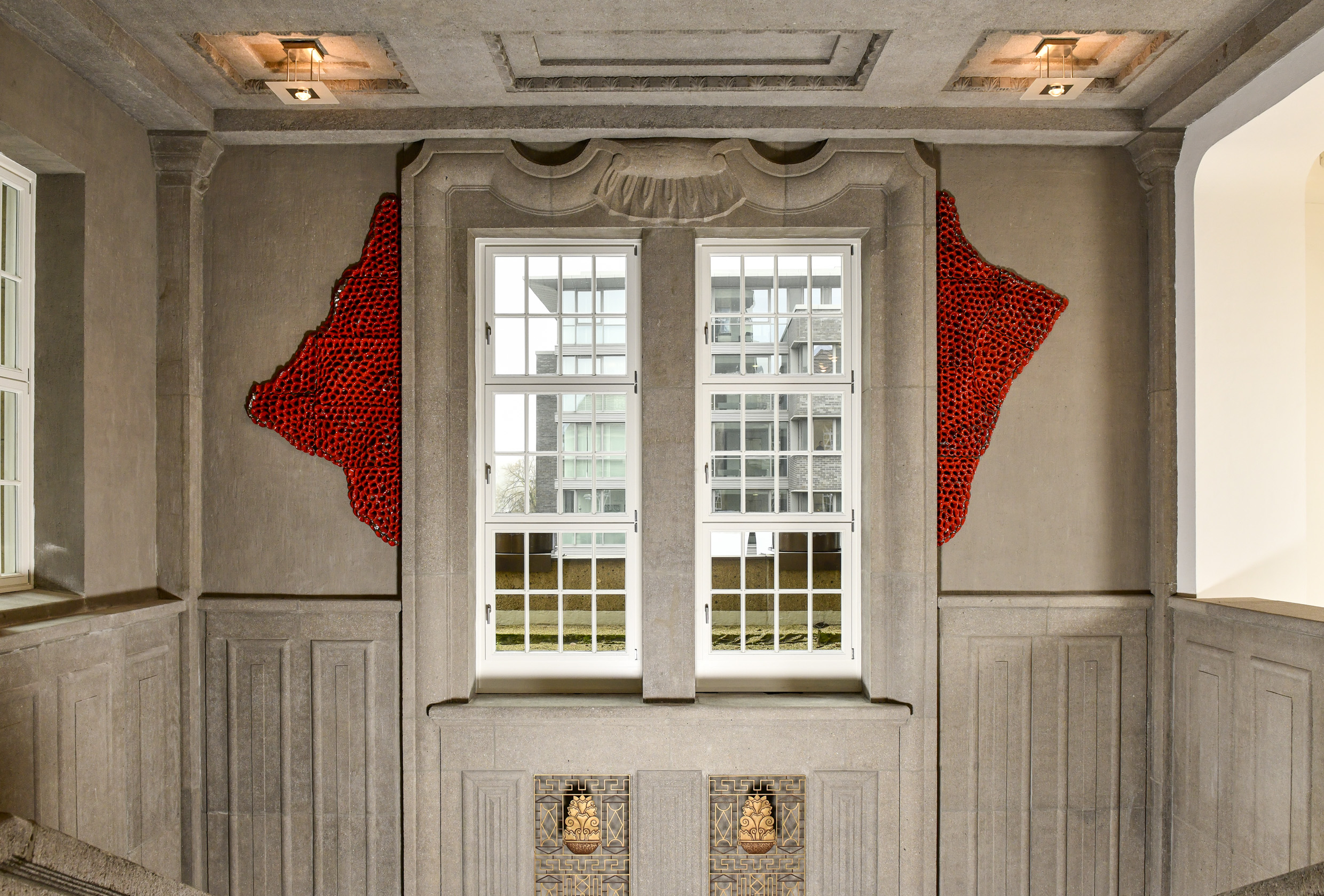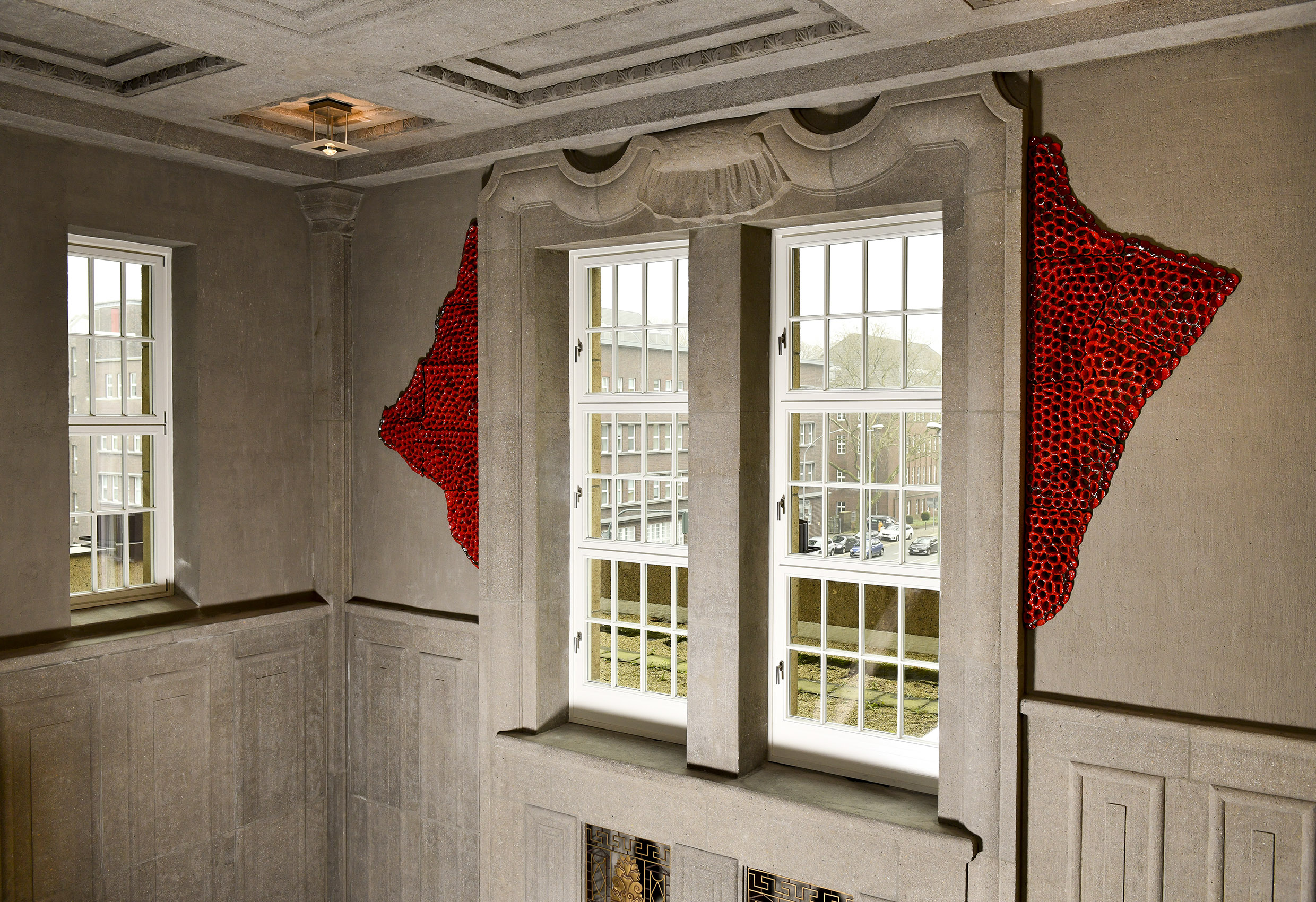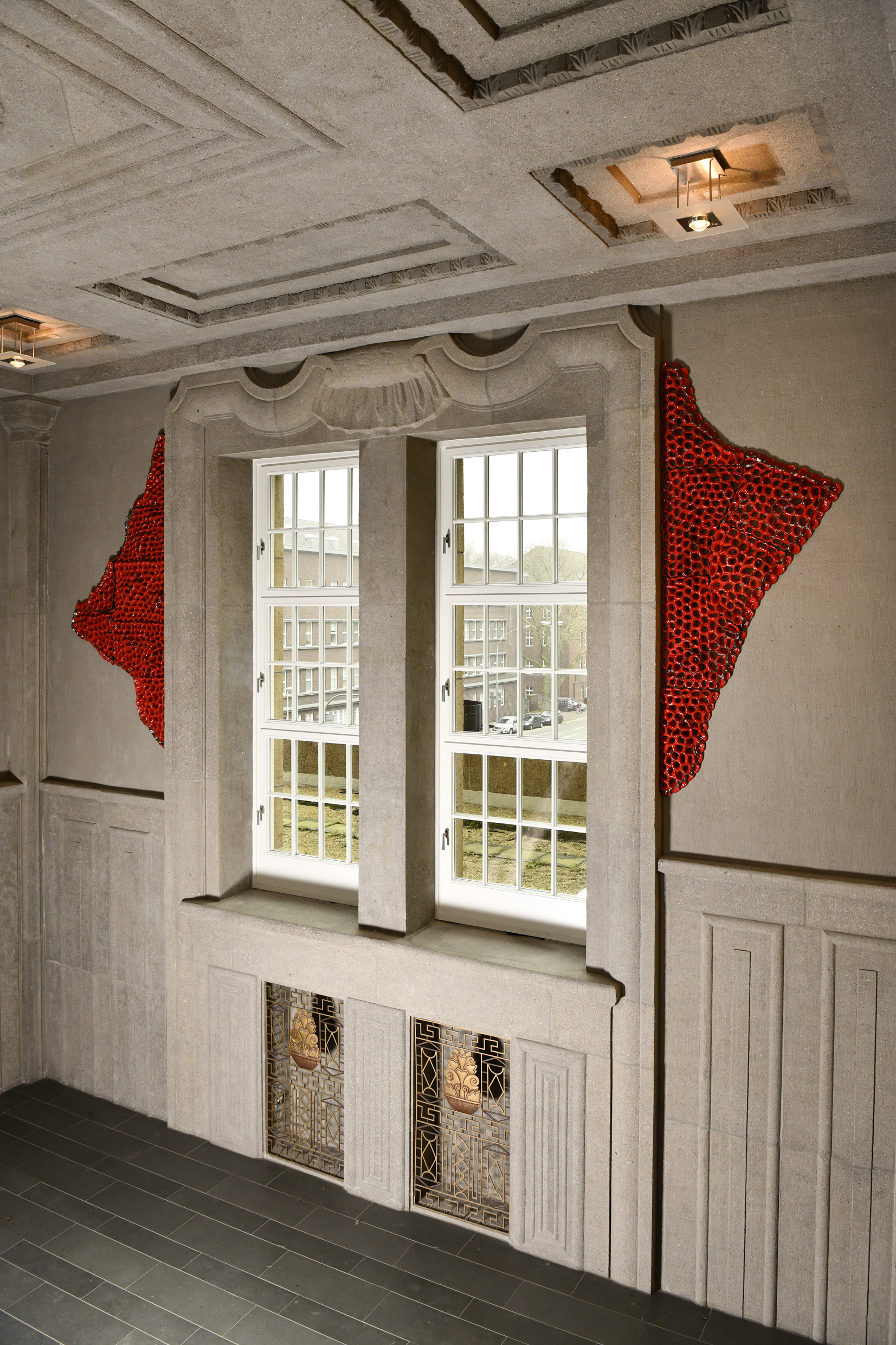
25°C
- Emscherhaus, 2021
- Ceramic
168 x 349 x 10 cm
159 x 349 x 10 cm
An ornamental structure made up of rows of many small calyxes seems to proliferate in the stairway of the Emschergenossenschaft headquarters. The network extends on the wall between the first and second floors, and frames the view onto Richard-Wagner-Straße. The red coloration of the ceramic is a powerful eyecatcher—it can’t be overlooked on the way up to the building’s second floor.
The work, titled 25°, was created by the artist Katrin Wegemann (*1982), originally from the Ruhr and now based in Berlin. Wegemann, who studied fine art and sculpture at the University of Fine Arts Münster, the Kunstakademie Düsseldorf, and the weissensee school of art and design berlin, deals with the subject of time in her often site-specific works, where it is articulated through changes in the material used. Wegemann is interested in and emphasizes the temporal process the sculptures go through. The gives rise to works that oscillate between different aggregate states. The wall piece for the Emscherhaus is characterized by a performative element: its shimmering surface, vitalized by the incidental light, and irregular structures cause the sculpture to vibrate and pulsate, setting the rigid form in motion, as if it were alive. The calyxes rise and fall, giving the overall impression of an organism.
In the headquarters of the Emschergenossenschaft, Germany’s largest water board, which is facing the issues of climate change and water protection, the red network has a further impact. It veers from abstraction into representation in a reminder of coral, whose expiration has become a symbol for the climate crisis and marine pollution. Investigation by the Global Coral Reef Monitoring Network in 2021 showed that fourteen percent of the tropical coral reefs disappeared between 2009 and 2018 due to heat and pollution, which means the loss of habitats essential to the survival of fish and crustaceans. The rise in water temperature is a threat to the ecosystem because above 30° C the algae that live in symbiosis with the coral cease producing the carbohydrates the coral needs. These single-cell organisms are then sloughed off and the coral dies from lack of nutrition. Wegemann’s 25°, whose title is the temperature at which the coral reefs grow best, powerfully reflects the fragility of the oceans in its fragile material of ceramic.
(Agnes Sawer)





